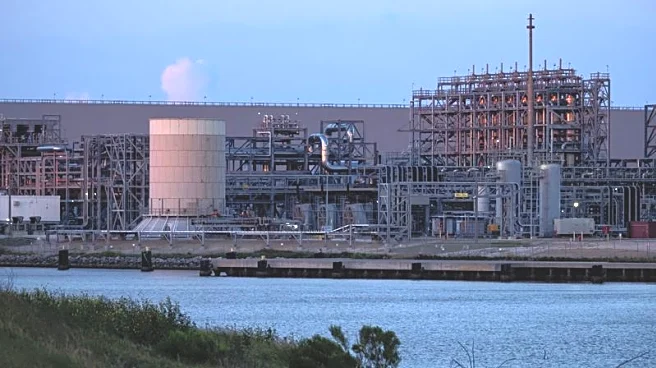What's Happening?
The United States has set a new record by exporting 10.1 million metric tonnes (mmt) of liquefied natural gas (LNG) in October, according to data from LSEG. This marks a significant increase from the 9.1
mmt exported in September. The surge in exports is largely attributed to the operational start of Venture Global's Plaquemines export plant and the expansion of Cheniere's Corpus Christi Stage 3 project. Europe continues to be the primary destination for U.S. LNG, receiving 6.9 mmt, or nearly 69% of total exports, as the continent prepares for winter. The U.S. also exported LNG to Asia and Latin America, although in smaller quantities.
Why It's Important?
The record-setting LNG exports underscore the United States' position as the world's largest LNG exporter, highlighting its critical role in global energy markets. The increased exports to Europe are particularly significant as the continent seeks to secure energy supplies amid geopolitical tensions and a push for energy independence. This development benefits U.S. energy companies like Venture Global and Cheniere, which are expanding their market reach and capacity. However, the close price parity between European and Asian markets suggests limited incentives for U.S. exporters to shift focus away from Europe, maintaining the region's reliance on U.S. LNG.
What's Next?
As the U.S. continues to expand its LNG export capacity, further developments in infrastructure and international agreements could shape future export patterns. The completion of Cheniere's Corpus Christi Stage 3 project, expected in 2026, will significantly increase export capacity, potentially altering global LNG supply dynamics. Additionally, geopolitical developments and energy policies in Europe and Asia will influence future demand and pricing, impacting U.S. export strategies.













